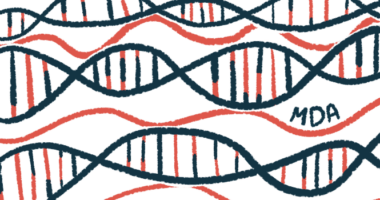Voyager selects gene therapy candidate for future clinical trials
Testing is expected to begin in 2025

Voyager Therapeutics has selected a lead gene therapy candidate to advance into clinical trials with the aim of correcting the genetic defect that causes Friedreich’s ataxia (FA).
With this decision, which was made with Neurocrine Biosciences, the companies expect to begin clinical trials in 2025.
“The nomination of this development candidate in FA marks an important step in our strategic collaboration with Neurocrine,” Alfred W. Sandrock, Jr., MD, PhD, CEO of Voyager, said in a company press release.
In FA, defects in the FXN gene lead to a deficiency in frataxin, a protein that’s essential for the function of mitochondria, the energy-producing centers in cells. A lack of frataxin results in progressive nerve cell degeneration and the onset of FA symptoms, such as a loss of muscle control, vision or hearing impairment, slurred speech, fatigue, and heart problems.
There’s no cure for FA, but a number of treatments can help ease symptoms and slow progression, including Skyclarys (omaveloxolone), an oral treatment approved in 2023 for adults and adolescents.
“While there has been encouraging recent progress in the treatment of FA, it remains a very challenging and eventually fatal disease for which new therapeutic approaches are needed,” Sandrock said.
Delivering a healthy gene
Using its TRACER capsid discovery platform, Voyager identified a new adeno-associated virus (AAV) shell, or capsid, that can penetrate the blood-brain barrier, the semi-permeable barrier that tightly regulates the movement of molecules and cells between the bloodstream and the brain. The experimental treatment delivers a healthy FXN gene to cells to increase frataxin production.
The goal is to target areas of the brain, following an infusion into the bloodstream, that have been difficult to reach with other therapies.
In 2019, Neurocrine began collaborating with Voyager to develop and commercialize its gene therapy programs. The partnership combines Neurocrine’s expertise in neuroscience, commercialization, and treatment development with Voyager’s gene therapies.
With the selection of a candidate for future trials, Voyager received a $5 million milestone payment. The company is also eligible to receive additional milestone payments based on the program’s advancement.
The candidate selection reflects “the power of combining Voyager’s TRACER AAV capsids and payload design capabilities with Neurocrine’s expertise in neuroscience and clinical development,” Sandrock said.
Voyager has multiple gene therapy programs, including one for Parkinson’s disease and VY-SOD102 for amyotrophic lateral sclerosis (ALS), which showed promise in animal models. Last year, Neurocrine acquired the rights to Voyager’s gene therapy program for Parkinson’s associated with mutations in the GBA1 gene and for other GBA1-mediated diseases.
“We look forward to progressing this and our other gene therapy programs, including our wholly-owned SOD1 ALS program and our Neurocrine-partnered GBA1 Parkinson’s program, towards clinical studies,” Sandrock said.







